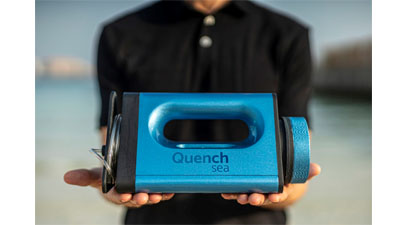
Breaking News
 Engineered backdoors in technology, have given intelligence agencies unfettered powers.
Engineered backdoors in technology, have given intelligence agencies unfettered powers.
 AI-Powered Robots Plant Trees in China's Deserts
AI-Powered Robots Plant Trees in China's Deserts
 Judge Temporarily Blocks DOJ From Using Evidence Proving James Comey's Guilt
Judge Temporarily Blocks DOJ From Using Evidence Proving James Comey's Guilt
 Offer Royale: Paramount-Netflix Bidding War For Warner Bros Heats Up In A Blockbuster Showdown
Offer Royale: Paramount-Netflix Bidding War For Warner Bros Heats Up In A Blockbuster Showdown
Top Tech News
 Build a Greenhouse HEATER that Lasts 10-15 DAYS!
Build a Greenhouse HEATER that Lasts 10-15 DAYS!
 Look at the genius idea he came up with using this tank that nobody wanted
Look at the genius idea he came up with using this tank that nobody wanted
 Latest Comet 3I Atlas Anomolies Like the Impossible 600,000 Mile Long Sunward Tail
Latest Comet 3I Atlas Anomolies Like the Impossible 600,000 Mile Long Sunward Tail
 Tesla Just Opened Its Biggest Supercharger Station Ever--And It's Powered By Solar And Batteries
Tesla Just Opened Its Biggest Supercharger Station Ever--And It's Powered By Solar And Batteries
 Your body already knows how to regrow limbs. We just haven't figured out how to turn it on yet.
Your body already knows how to regrow limbs. We just haven't figured out how to turn it on yet.
 We've wiretapped the gut-brain hotline to decode signals driving disease
We've wiretapped the gut-brain hotline to decode signals driving disease
 3D-printable concrete alternative hardens in three days, not four weeks
3D-printable concrete alternative hardens in three days, not four weeks
 Could satellite-beaming planes and airships make SpaceX's Starlink obsolete?
Could satellite-beaming planes and airships make SpaceX's Starlink obsolete?
Muscle-powered mechanism desalinates up to 8 liters of seawater per hour

Currently the subject of a Kickstarter campaign, the QuenchSea 3.0 is made by British company Hydro Wind Energy. The firm debuted the original human-powered QuenchSea device back in 2020, followed by the smaller deep-sea-pressure-powered QuenchSea Reel in 2023.
On the original model, users arm-pumped a lever that forced seawater through a triple filtration system and a reverse osmosis membrane. The seawater was drawn in through one silicone tube that ran into the ocean, while the purified water was dispensed out of another tube that led to a bottle or other container.
This setup was said to remove salt, viruses, bacteria, microplastic particles and other contaminants from seawater at a claimed rate of over 2 liters (0.5 US gal) of water per hour on average, or up to 3 liters under ideal conditions. The resulting drinking water was claimed to meet World Health Organization (WHO) standards.
The 3.0 utilizes the same basic concept, but adds a pressure boosting mechanism and an energy recovery system. As a result, it's said to be easier to pump than the original and faster at desalination/filtration, reportedly putting out an impressive 6 to 8 liters (1.6 to 2 gal) of drinking water per hour.
QuenchSea promises that the purified water will contain less than 1,000 milligrams of total dissolved solids (TDS) per liter, a level that meets WHO standards. In fact, the device should typically bring seawater down to the neighborhood of 300 to 500 TDS, with the activated carbon in its filtration system removing off-putting tastes and odors.
It should be noted that both the reverse osmosis membrane and the filter cartridge will periodically need to be replaced. Depending on factors such as seawater salinity and temperature, one membrane should be good for about 300 liters (79 gal) of drinking water. We're still waiting to hear back about the cost of refills.
Assuming the QuenchSea 3.0 reaches production, a pledge of US$250 will get you one. Its planned retail price is $500.
The following video provides more information on how the device works.

 First totally synthetic human brain model has been realized
First totally synthetic human brain model has been realized Mach-23 potato gun to shoot satellites into space
Mach-23 potato gun to shoot satellites into space

